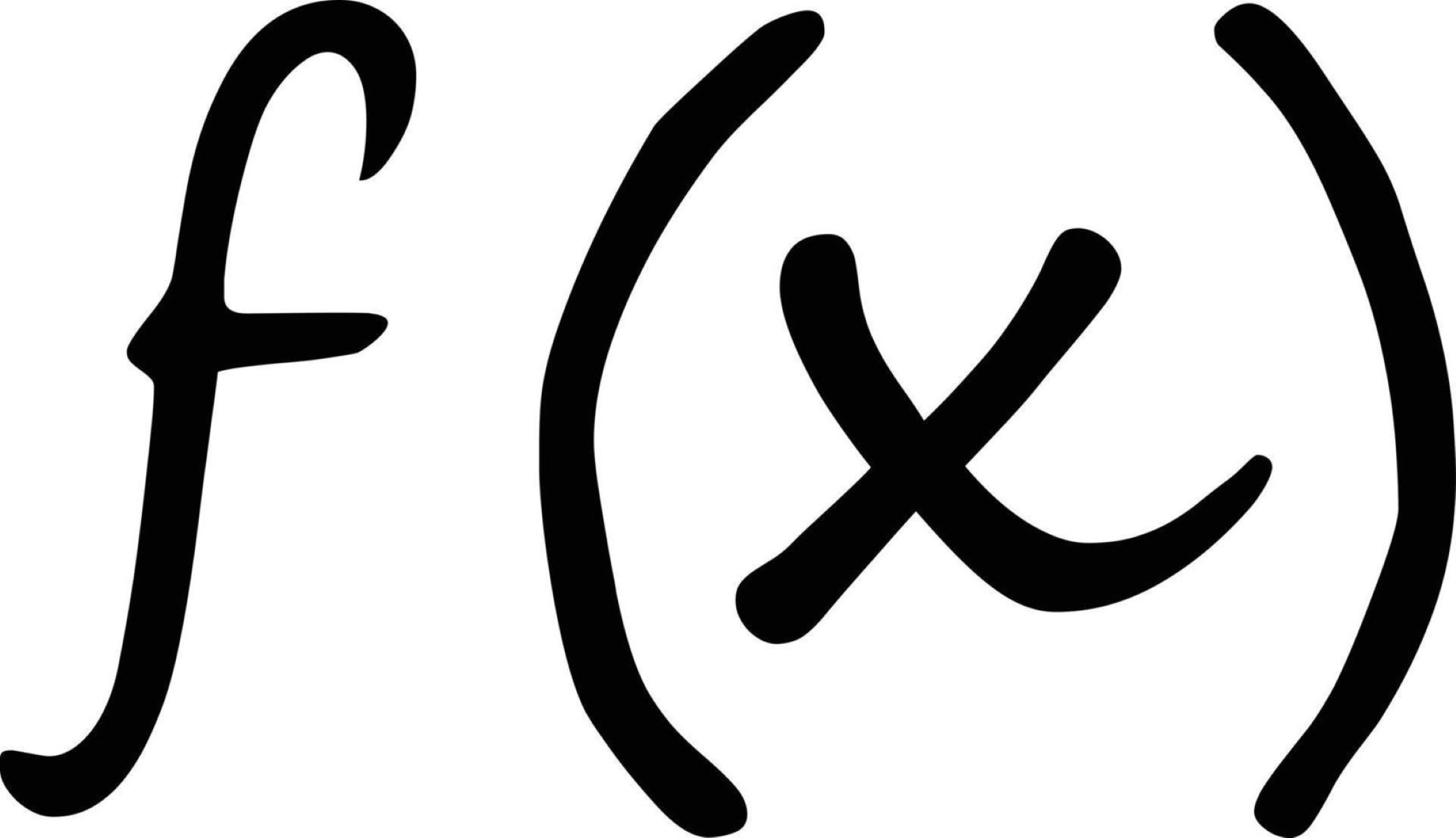Home>Mathematics>How To Determine If A Function Is Even Or Odd


Mathematics
How To Determine If A Function Is Even Or Odd
Published: February 26, 2024
Learn how to determine if a function is even or odd in mathematics. Understand the properties and rules for identifying even and odd functions.
(Many of the links in this article redirect to a specific reviewed product. Your purchase of these products through affiliate links helps to generate commission for Regretless.com, at no extra cost. Learn more)
Table of Contents
Introduction
Understanding the properties of functions is fundamental in mathematics, as it allows us to gain insights into their behavior and characteristics. One key property that mathematicians often explore is whether a function is even or odd. This distinction provides valuable information about the symmetry and behavior of the function, which can be crucial in various mathematical applications.
In this article, we will delve into the concept of even and odd functions, exploring their definitions, properties, and methods for determining them. By the end of this discussion, you will have a clear understanding of how to identify whether a function is even, odd, or neither, empowering you to analyze functions with confidence and precision.
Let's embark on this mathematical journey to unravel the intriguing nature of even and odd functions, shedding light on their significance and practical implications.
Understanding Even and Odd Functions
In the realm of mathematics, functions play a pivotal role in modeling relationships between variables and understanding the behavior of various phenomena. When it comes to analyzing functions, the concepts of even and odd functions offer valuable insights into their symmetry and behavior.
An even function is characterized by its symmetry with respect to the y-axis. This means that if we reflect the graph of an even function across the y-axis, it remains unchanged. Mathematically, a function f(x) is even if it satisfies the condition f(x) = f(-x) for all x in its domain. This property implies that the function produces identical outputs for opposite inputs, resulting in a symmetric graph about the y-axis.
On the other hand, an odd function exhibits symmetry with respect to the origin. When we reflect the graph of an odd function across the origin, it retains its original shape. Formally, a function f(x) is odd if it meets the requirement f(x) = -f(-x) for all x in its domain. This property signifies that the function produces opposite outputs for opposite inputs, leading to a symmetric graph about the origin.
Understanding the distinguishing features of even and odd functions is essential for grasping their behavior and characteristics. It enables mathematicians and analysts to identify patterns, make predictions, and comprehend the underlying structure of various functions. Moreover, recognizing whether a function is even, odd, or neither provides valuable information for solving equations, analyzing graphs, and tackling real-world problems in fields such as physics, engineering, and economics.
By delving into the nature of even and odd functions, we gain a deeper appreciation for the elegance and symmetry present in mathematical concepts. These fundamental properties not only enrich our understanding of functions but also serve as building blocks for more advanced mathematical theories and applications. As we continue our exploration, we will uncover the methods for determining whether a function exhibits even, odd, or neither behavior, further solidifying our grasp of these intriguing mathematical concepts.
Determining if a Function is Even
To ascertain whether a function is even, we can employ a straightforward yet powerful method involving algebraic manipulation. The defining characteristic of an even function is its symmetry about the y-axis, which manifests as f(x) = f(-x) for all x in its domain. This property allows us to leverage algebraic techniques to verify the evenness of a function.
When presented with a function f(x), we can evaluate f(-x) and compare it to f(x). If the two expressions yield the same result for all x in the domain, the function satisfies the condition for evenness. This process involves substituting -x for x in the function and simplifying the resulting expression to determine if it matches the original function.
For instance, consider the function f(x) = x^2. To determine if this function is even, we substitute -x for x in the function:
f(-x) = (-x)^2 = x^2
Upon simplifying, we find that f(-x) equals x^2, which is identical to the original function f(x) = x^2. Consequently, we conclude that the function f(x) = x^2 is even, as it satisfies the condition f(x) = f(-x) for all x.
This method of substitution and comparison provides a systematic approach to identifying even functions, enabling mathematicians and analysts to discern the symmetry properties of various functions. By leveraging algebraic manipulation, we can confidently determine whether a function exhibits even behavior, thereby unlocking valuable insights into its graphical representation and mathematical properties.
As we delve deeper into the realm of even functions, this method serves as a foundational tool for analyzing and categorizing functions based on their symmetry. By mastering the art of determining evenness, we equip ourselves with a powerful technique for unraveling the intricate nature of functions and harnessing their symmetry to unravel the mysteries of mathematical phenomena.
Determining if a Function is Odd
In the realm of mathematics, the identification of odd functions holds significant importance in understanding the behavior and properties of various mathematical expressions. An odd function is characterized by its symmetry about the origin, which manifests as f(x) = -f(-x) for all x in its domain. This distinctive property allows us to employ algebraic techniques to ascertain whether a function exhibits odd behavior.
When presented with a function f(x), we can utilize a systematic approach to determine its oddness. By evaluating f(-x) and comparing it to -f(x), we can discern whether the function satisfies the condition for oddness. This process involves substituting -x for x in the function and simplifying the resulting expression to ascertain if it aligns with the negation of the original function.
For instance, consider the function f(x) = x^3. To investigate its oddness, we substitute -x for x in the function:
f(-x) = (-x)^3 = -x^3
Upon simplifying, we find that f(-x) equals -x^3, which aligns with the negation of the original function f(x) = x^3. Consequently, we conclude that the function f(x) = x^3 is odd, as it satisfies the condition f(x) = -f(-x) for all x.
This method of substitution and comparison provides a robust framework for identifying odd functions, enabling mathematicians and analysts to discern the symmetry properties of various mathematical expressions. By leveraging algebraic manipulation, we can confidently determine whether a function exhibits odd behavior, thereby gaining valuable insights into its graphical representation and mathematical characteristics.
As we delve deeper into the realm of odd functions, this method serves as a foundational tool for analyzing and categorizing functions based on their symmetry. By mastering the art of determining oddness, we equip ourselves with a powerful technique for unraveling the intricate nature of functions and harnessing their symmetry to unravel the mysteries of mathematical phenomena.
The systematic approach to determining odd functions not only enriches our understanding of mathematical concepts but also equips us with a versatile tool for exploring the symmetrical properties of various functions. This method empowers mathematicians and analysts to confidently identify odd functions, paving the way for deeper insights into the behavior and characteristics of mathematical expressions.
Examples of Even and Odd Functions
To solidify our understanding of even and odd functions, let's explore concrete examples that showcase these distinct properties in mathematical expressions. By examining specific functions and analyzing their symmetry, we can gain valuable insights into the behavior and characteristics of even and odd functions.
Read more: How To Graph Piecewise Functions
Example 1: Even Function
Consider the function f(x) = x^4. To determine if this function is even, we apply the defining property of evenness, which states that f(x) = f(-x) for all x in its domain. Upon substituting -x for x in the function, we obtain:
f(-x) = (-x)^4 = x^4
Upon simplifying, we find that f(-x) equals x^4, which is identical to the original function f(x) = x^4. Therefore, we conclude that the function f(x) = x^4 is even, exhibiting symmetry about the y-axis.
Example 2: Odd Function
Next, let's examine the function g(x) = x^3. To ascertain its oddness, we utilize the defining property of odd functions, which states that f(x) = -f(-x) for all x in its domain. By substituting -x for x in the function, we obtain:
g(-x) = (-x)^3 = -x^3
Upon simplifying, we find that g(-x) equals -x^3, aligning with the negation of the original function g(x) = x^3. Consequently, we conclude that the function g(x) = x^3 is odd, demonstrating symmetry about the origin.
Example 3: Neither Even nor Odd
Now, let's consider the function h(x) = x^2 + 1. Upon evaluating h(-x) and comparing it to the original function, we find that h(-x) = x^2 + 1, which does not align with the properties of even or odd functions. Therefore, we classify the function h(x) = x^2 + 1 as neither even nor odd, indicating that it does not exhibit the symmetry characteristics associated with even or odd functions.
By examining these examples, we gain a deeper appreciation for the distinct properties of even and odd functions. These concrete illustrations not only reinforce our understanding of symmetry in mathematical expressions but also provide valuable insights into the graphical representation and behavior of functions.
Through these examples, we have elucidated the defining characteristics of even and odd functions, empowering us to discern their symmetry and properties with precision and confidence. This deeper understanding equips mathematicians and analysts with a powerful framework for analyzing and categorizing functions based on their symmetry, paving the way for enhanced insights into the fascinating world of mathematical phenomena.
Conclusion
In conclusion, the exploration of even and odd functions has unveiled the captivating symmetry and distinctive properties inherent in mathematical expressions. By delving into the defining characteristics of even and odd functions, we have gained valuable insights into their behavior, graphical representation, and practical implications in various mathematical applications.
The systematic methods for determining even and odd functions have equipped us with powerful tools for analyzing and categorizing functions based on their symmetry. Through algebraic manipulation and comparison, we have honed our ability to discern the symmetry properties of functions, enabling us to confidently identify whether a function is even, odd, or neither. This proficiency empowers mathematicians and analysts to unravel the mysteries of mathematical phenomena, make predictions, and comprehend the underlying structure of various functions with precision and clarity.
Furthermore, the concrete examples of even and odd functions have provided tangible illustrations of these distinct properties, reinforcing our understanding of symmetry in mathematical expressions. By examining specific functions and analyzing their behavior, we have deepened our appreciation for the elegance and symmetry present in mathematical concepts, enriching our mathematical insights and analytical capabilities.
As we navigate the realm of even and odd functions, we recognize the profound impact of these properties in diverse fields, including physics, engineering, economics, and beyond. The ability to identify even and odd functions empowers us to tackle real-world problems, analyze graphs, and make informed decisions based on the underlying symmetry and behavior of mathematical expressions.
In essence, the exploration of even and odd functions has not only enriched our understanding of mathematical concepts but also equipped us with a versatile framework for unraveling the intricate nature of functions. By mastering the art of determining evenness and oddness, we have embraced the beauty of symmetry in mathematical expressions, paving the way for deeper insights and enhanced problem-solving capabilities in the fascinating world of mathematics.














